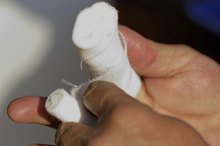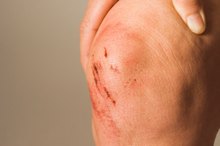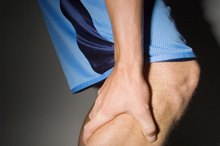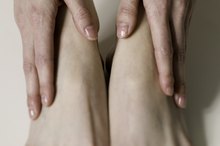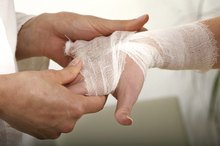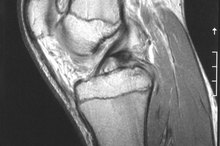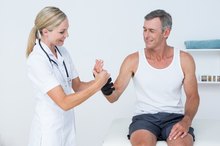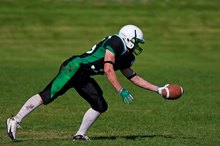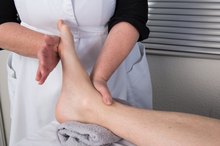How Soon Can You Play Soccer After Breaking a Toe?
Broken toes are common injuries for soccer players, who consistently put excessive strain on their feet. Although fractured toes usually heal well, they must be treated properly. If done so, soccer players can usually return to play within two to six weeks.
Broken Toe
A broken toe occurs when one of your toe bones, known as phalanges, fractures. There are two types of bone fractures: traumatic and stress 1. Traumatic fractures are the result of a direct blow or impact, such as dropping something on your foot or stubbing your toe. Stress fractures are small, hairline breaks that develop from repetitive stress being placed on the bone. Depending on the type of fracture you suffer, symptoms can include pain when walking and/or resting, swelling, bruising and a crooked or abnormal appearance of your toe.
- A broken toe occurs when one of your toe bones, known as phalanges, fractures.
- Stress fractures are small, hairline breaks that develop from repetitive stress being placed on the bone.
Treatment
The Duration of a Broken Finger
Learn More
According to the Mayo Clinic, a broken toe must be immobilized to allow its ends to knit back together. Immobilization can be done several ways. Buddy taping, in which your broken toe is taped to its neighboring toe, is commonly done on the smaller toes. Your doctor may also give you a hard-bottomed shoe that can prevent your toe from flexing. If the toe fragments will not stay together, you may need to wear a cast. Pain from a broken toe can usually be relieved with over-the-counter medication. With more severe breaks, your doctor can prescribe stronger medicine.
- According to the Mayo Clinic, a broken toe must be immobilized to allow its ends to knit back together.
Prognosis
Most broken toes heal fine, according to the Mayo Clinic. The tape, shoe or cast usually will be needed for 2 to 4 weeks. Soccer players are susceptible to both types of toe fractures due to the amount of pressure put on their feet and the likelihood of getting kicked or stepped on. Because of this, you want to make sure that the bone is completely healed before returning to play. It may take up to six weeks for the bone to fully heal. Get your doctor’s permission before playing again.
- Most broken toes heal fine, according to the Mayo Clinic.
- Because of this, you want to make sure that the bone is completely healed before returning to play.
Prevention
Rehabilitation for a Broken Kneecap
Learn More
Most broken toes cannot be prevented. However, occasionally, especially with stress fractures, measures can be taken to reduce the risk of suffering a broken toe. For starters, wear comfortable, properly fitting shoes or cleats. Your footwear should have cushioning and arch support. Increase your amount of exercise and running gradually. This will help avoid putting too much stress on your bones before they are strong enough to handle it.
- Most broken toes cannot be prevented.
- For starters, wear comfortable, properly fitting shoes or cleats.
Related Articles
References
- Foot Health Facts: Toe and Metatarsal Fractures (Broken Toes)
- Broken toe - self-care: MedlinePlus Medical Encyclopedia. MedlinePlus. Published 2018.
- American College of Foot and Ankle Surgeons. Toe and Metatarsal Fractures (Broken Toes). Foot Health Facts.
- Robert L. Hatch, M.D., M.P.H, and Scott Hacking, M.D., Evaluation and Management of Toe Fractures. The American Academy of Family Physicians.
Writer Bio
Andrew Sheldon is a writer from New York. His writing focuses on health and exercise, but he is knowledgeable in various other areas. Sheldon has published articles on and Fitday.com other online health and fitness publications. He graduated from New York University with a Bachelor of Science degree.
